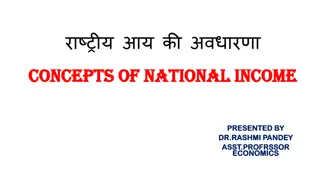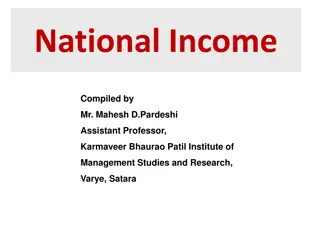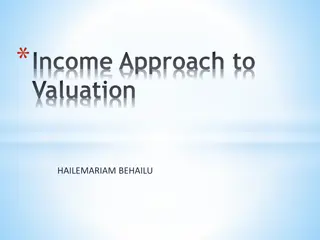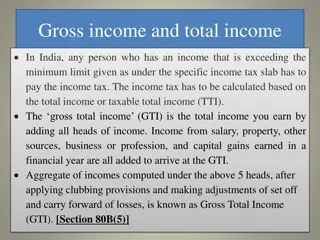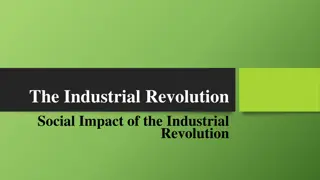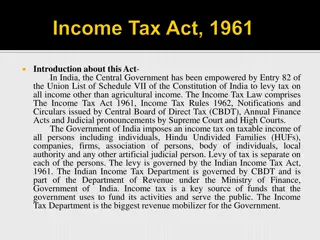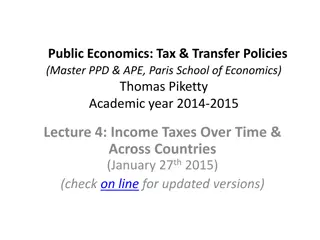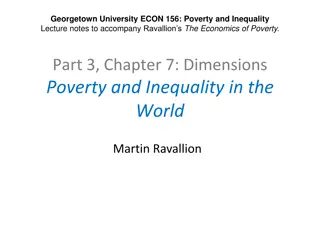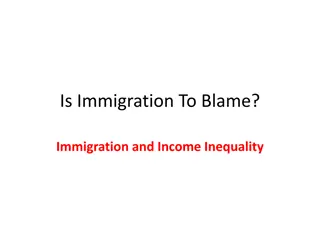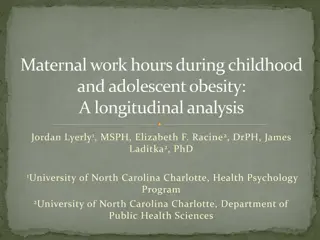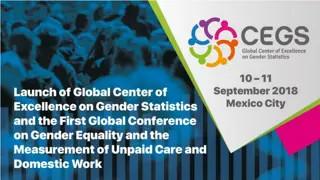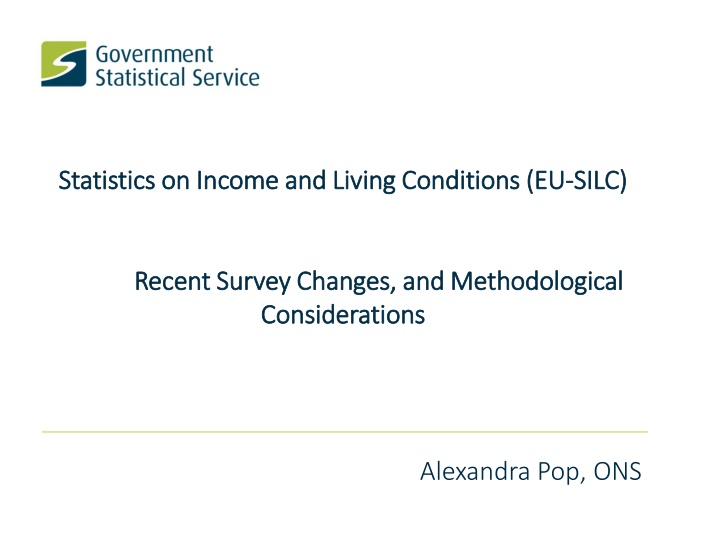
Recent Changes in EU-SILC Survey Methodology
Explore the recent methodological changes in the EU Statistics on Income and Living Conditions (EU-SILC) survey, including the shift to a five-year data collection cycle and enhancements in survey structure to capture comprehensive data on income, poverty, and social conditions. Learn about the shift towards online data collection and integrated survey designs to provide more accurate estimates on household finances and living conditions.
Download Presentation

Please find below an Image/Link to download the presentation.
The content on the website is provided AS IS for your information and personal use only. It may not be sold, licensed, or shared on other websites without obtaining consent from the author. If you encounter any issues during the download, it is possible that the publisher has removed the file from their server.
You are allowed to download the files provided on this website for personal or commercial use, subject to the condition that they are used lawfully. All files are the property of their respective owners.
The content on the website is provided AS IS for your information and personal use only. It may not be sold, licensed, or shared on other websites without obtaining consent from the author.
E N D
Presentation Transcript
Statistics on Income and Living Conditions (EU Statistics on Income and Living Conditions (EU- -SILC) SILC) Recent Survey Changes, and Methodological Recent Survey Changes, and Methodological Considerations Considerations Alexandra Pop, ONS
Objectives: Introduction to EU-SILC Outline of the survey changes in 2017 The methodology to account for these changes
Introduction to EU Introduction to EU- -SILC SILC
Introduction to the EU Introduction to the EU- -SILC SILC An instrument aimed at collecting timely and comparable microdata on income income, poverty poverty, social conditions conditions social exclusion and living exclusion and living Involves data that is: 1.Cross-sectional 2. Longitudinal Eurostat requirement of all EU Member States. Covers private household population at the time of data collection.
Outline of the survey changes in 2017 Outline of the survey changes in 2017 Change in EU-SILC Year 1 source Increase from 4 to 5 years
1 1st st Change Change Change in EU-SILC Year 1 source
Survey Structure Survey Structure Past EU-SILC (2012-2016) 2017 EU-SILC Survey on Survey on Living Living Conditions Conditions (Y2 (Y2 - - Y 4) Survey on Survey on Living Living Conditions Conditions (Y 2 (Y 2 - - Y 5) Family Family Resource Resource Survey Survey subsample subsample (Y 1) (Y 1) Household Household Finance Finance Survey Survey (Y 1) (Y 1) Y 4) Y 5)
Transformation of Social Surveys Transformation of Social Surveys Survey on Living Conditions (SLC) Wealth and Assets Survey (WAS) Living Costs and Food Survey (LCF) Household Finance Survey Integrated design to provide better estimates on household finances and living conditions Linked to detailed surveys to meet user needs Introduce admin data to improve the quality of estimates, reduce measurement error, and respondent burden Use of online collection and digital technology
2017 HFS 2017 HFS HFS 2017 is comprised of SLC and LCF Combining the two allows for a sample size of 17,000 households Core Compliance with Eurostat precision requirements at region level (including labour, income, housing, saving) (SLC+LCF)
HFS Vision HFS Vision Going forward, HFS aims to include admin data, and specific modules for different measures. Expenditure (LCF) Core Data available longitudinally Admin data (including labour, income, housing, saving) (SLC+LCF) Living Conditions (SLC) Wealth (Wealth and Assets Survey)
2 2nd nd Change Change Increase from 4 to 5 years
Longitudinal EU Longitudinal EU- -SILC 4 year structure SILC 4 year structure SLC Y4 SLC Y4 SLC Y4 SLC Y4 SLC Y3 SLC Y3 SLC Y3 SLC Y3 SLC Y2 SLC Y2 SLC Y2 SLC Y2 FRS Y1 FRS Y1 FRS Y1 FRS Y1 2013 2014 2015 2016
Longitudinal EU Longitudinal EU- -SILC 5 year structure SILC 5 year structure SLC Y5 SLC Y4 SLC Y4 SLC Y4 SLC Y4 SLC Y4 SLC Y3 SLC Y3 SLC Y3 SLC Y3 SLC Y3 SLC Y2 SLC Y2 SLC Y2 SLC Y2 SLC Y2 FRS Y1 FRS Y1 FRS Y1 FRS Y1 HFS Y1 2013 2014 2015 2016 2017
The methodology to account for these changes The methodology to account for these changes Cross-Sectional Weights for HFS Five-year longitudinal EU-SILC weights Children cross-sectional weight for childcare
Cross Cross- -Sectional Weights for HFS Sectional Weights for HFS
Cross Cross- -Sectional Weights for HFS Sectional Weights for HFS Probability of Each Cluster Being Sampled P(Stage 1) a b c = a= No. of Postcodes Sampled at Region Level b= Total Number of Addresses in the Postcode c= Total Number of Addresses at Region Level Probability of each address being sampled in each cluster P(Stage 2) d e = d= Cluster Population for SLC/LCF Subsample e= Number of Addresses to be Sampled in Each Postcode Sector Lastly, calculate the design weight which is the inverse of the probability of selection. Design Weight ( 1) ( 2) p Stage p Stage 1 =
Five Five- -year longitudinal EU year longitudinal EU- -SILC weights SILC weights
5 Year Longitudinal Weight 2013 5 Year Longitudinal Weight 2013- -2017 2017 Multiply by Panel Adjustment Factor Scale Resulting Weight 5 year Longitudinal Weight 2013-2016 weights
Children cross Children cross- -sectional weight sectional weight
Children cross Children cross- -sectional weight sectional weight Required for a better estimation of children aged 12 and under, in childcare Formula: Formula: Children Weight = personal cross-sectional weight for the child i 'i w N N ' w = n i ' n 'n N = sum of personal cross-sectional weights for children aged n at the day of interview in the database = number of children in the demographic population aged n n N Calibrated to region, age, sex and household size
To Conclude To Conclude Today s presentation focused on: The changes for EU The changes for EU- -SILC in 2017 1. Survey Structure SILC in 2017 The methodology strategy to account for these changes The methodology strategy to account for these changes 1. A weight for HFS Year 1 2. Additional longitudinal weight to account for 5 years A new weight for children in childcare 3.
Thank you for your attention Thank you for your attention

